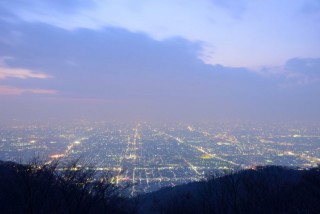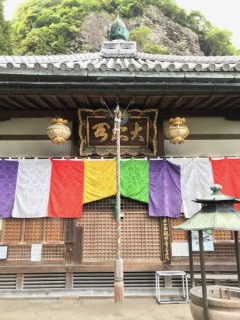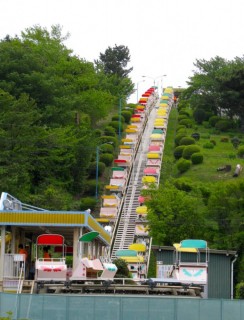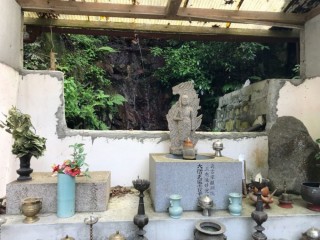Loading
Search
▼ Mount Ikoma
- Category:Tourism
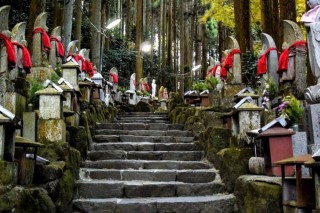
GAIJINPOT TRAVEL
A theme park atop a mountain all in Osaka’s backyard.
At first, Mount Ikoma, located on the border between Osaka and Nara prefectures, may seem like the other sacred mountains in Japan. But beyond the long history and worthwhile temples to visit there are quirky features like its mountaintop amusement park.
The mountain has attracted visitors for over a thousand years as anoramic views, historic and modern sites draw curious travelers from around the world. But before getting into what to do and see there, here’s a bit of its rich history.
History of Mount Ikoma
Ikoma has been inhabited and revered since at least the 5th Century, when Ikoma Shrine, a Shinto site dedicated to the mountain, was built. During imperial times, this shrine had a deep connection to the royal family.In 655, a Buddhist training site was established on the mountainside by En no Gyoja. This legendary monk pioneered an ascetic lifestyle still practiced today and was said to have superpowers. This location became a sought-after school for religious training and many famous monks — including Kukai, the founder of temple town Koyasan — are said to have studied here. Later, in 1678, a temple named Hozan-ji was built on this site. Hozan-ji was dedicated to the god of wisdom, joy and prosperity and became popular for vendors and entertainers. During the Showa Era (1926-1988), the area at the base of the mountain became an entertainment and red-light district.
While this is no longer the case, the present-day towns still retain this retro feel. Today, Mount Ikoma is a popular place to sightsee, hike, picnic, and play.
Attractions at Mount Ikoma
Mount Ikoma is home to a number of attractions, the most well-known ones being Ikoma Sanjo Amusement Park and two major temples: Hozan-ji and Kouhou-ji.Ikoma Sanjo Amusement Park is a children’s theme park for people of all ages located at the very top of the mountain. The views from the rides are stunning. The park is closed during the winter months but hikers can still stroll through and admire its vintage charm. Hozan-ji, a historic Buddhist temple, is an incredibly beautiful and serene escape. This temple complex features ornate statues, ancient wooden structures and a forested graveyard.
Kouhou-ji is another temple located near the peak. Surrounded by lush greenery and rarely crowded, this wooden and concrete structure conveys a feeling of whimsy. Beside the three main attractions, others include the ancient Ikoma Shrine, the Kintetsu Ikoma Cable Car, and the Sushidani Waterwheel.
Hiking
If you want the exercise those legs, you can ascent the steep stairs to Hozan-ji, explore the famous temple there and take the cable car up to the mountaintop from there.Feeling adventurous? You can also opt to hike one of the trails.
One such trail is the Zushidani Hiking Course, which takes explorers through almost every attraction Mount Ikoma has to offer in just a matter of few hours. To hike this course, you will need to start at Isikiri Tsurujiya Shrine, near Ishikiri station, and walk up Ishikiri Shopping Street, famous for fortune telling, as shown below. From there, follow signs for “Zushidani Hiking Course” (辻子谷ハイキングコース), which will take you to most of the sites mentioned above and others. The hike should take about 3 or 4 hours and includes a few steep ascents but isn’t too difficult.
While this might not be the first thing on tourists’ lists to see in Nara, perhaps that means a more authentic experience for those who who do!
Things To Know
Ikoma Sanjo Amusement Park
The Ikoma Sanjo Amusement Park’s opening hours vary according to the season, so you will need to check their official website:http://www.ikomasanjou.com (Japanese).
To ride the attractions inside, you can choose to pay individually for each attraction (around ¥300) or buy the ride pass on sale until 2 hours before closing time (¥3,200 for adults, ¥3,000 for children and ¥2,500 for infants).
For limited English info, go here: http://www.ikomasanjou.com/images/map_en.pdf
Hozan-ji Temple
Hozan-ji Temple is open every day. From April to September, the temple is open for visits from 8 a.m. to 4:30 p.m. From October to March, the temple opens from 8 a.m. to 4 p.m. To enter Hozan-ji, there is no admission fee.Hiking Tips
The mountain is home to many wild plants and animals, but it’s generally safe. During the winter, it may snow and the trail can become slippery, so you will need to hike with caution. The approach to the mountain from Ikoma city is particularly beautiful during cherry blossom season.How To Get There
Address
2312-1 Nabatachō, Ikoma-shi, Nara-ken 630-0231, JapanBy train
Trails and trains up the mountain can be reached from Shin-Ishikiri, Ishikiri, and Ikoma stations.By cable car: To access the mountaintop, you will need to ride the Kintetsu Ikoma cable car from Kintetsu Ikoma station to Houzanji station.
At Houzanji station, change to the cable car to Ikoma Sanjyo station and walk 3 minutes. (The Sanjyo line operates from 9:10 a.m. to 6:10 p.m. whereas the Hozan-ji line operates from 6:15 a.m. to 11:40 p.m. One trip costs ¥360 for adults and ¥180 for children.)
- June 30, 2019
- Comment (0)
- Trackback(0)


